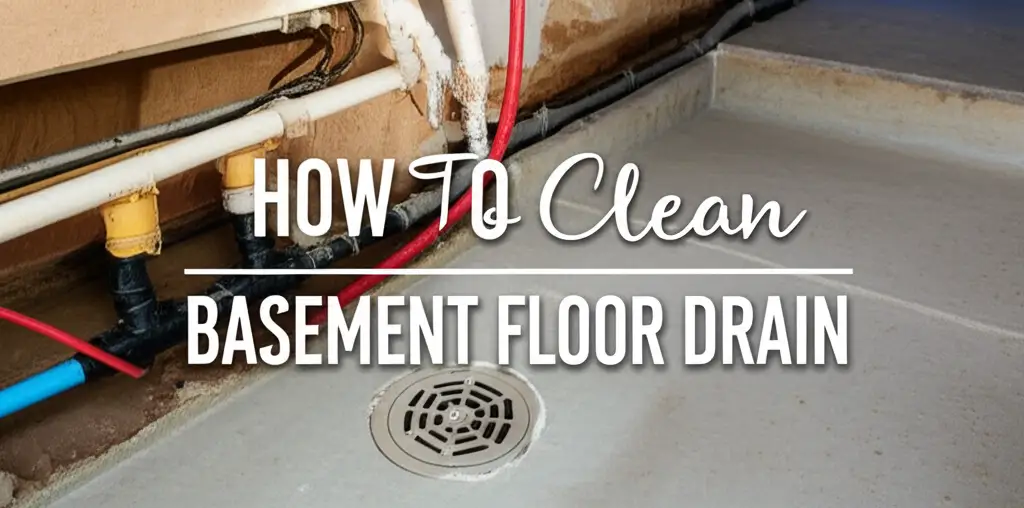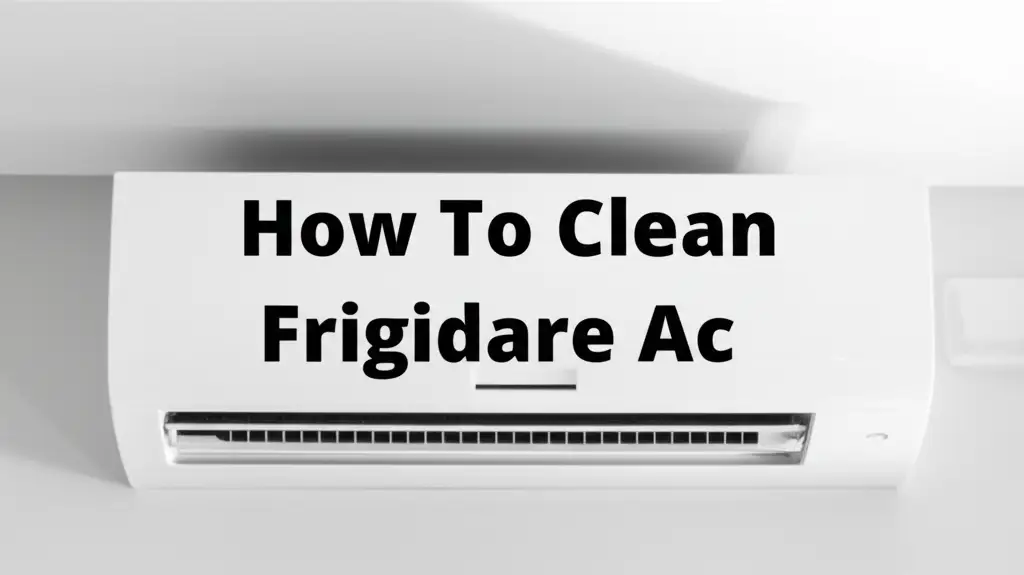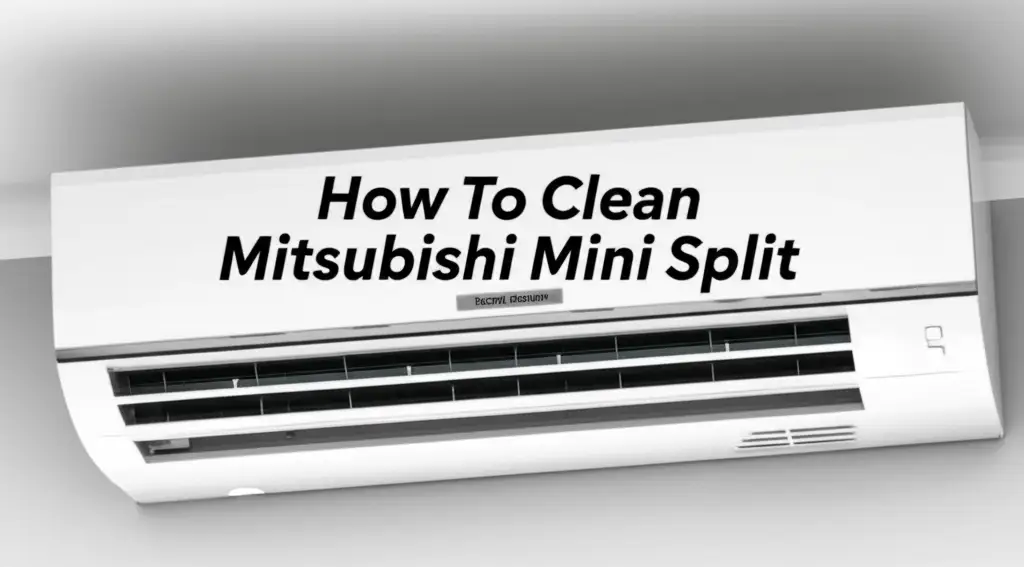· Home Maintenance · 18 min read
How To Clean Basement Floor Drain

Clean Basement Drain: A Comprehensive Guide
Have you ever walked into your basement and been greeted by an unpleasant, musty odor? Chances are, your basement floor drain is the culprit. This common fixture often goes unnoticed until it starts emitting foul smells or backs up, potentially leading to a messy situation. A clean basement floor drain is vital for maintaining a healthy and odor-free environment in your home’s lower level.
Cleaning your basement floor drain is a straightforward task, but it requires the right approach and tools. Ignoring it can lead to bigger problems, like persistent odors, slow drainage, or even water damage if a significant clog occurs. I understand the frustration a problematic drain causes. This article will guide you through the process step-by-step. We will cover identifying drain issues, gathering necessary supplies, and applying various cleaning methods to ensure your basement drain functions perfectly. You will also learn about preventative measures to keep it clean in the long run.
Takeaway
- Identify the source of drain issues, whether it is odor or a clog.
- Gather basic tools like gloves, a bucket, a screwdriver, and a flashlight.
- Perform manual cleaning first to remove visible debris.
- Use natural solutions like baking soda and vinegar for odors and minor clogs.
- Employ a drain snake or auger for deeper, stubborn blockages.
- Implement regular maintenance to prevent future problems.
- Know when to contact a professional plumber for severe issues.
To clean a basement floor drain, remove the grate, manually extract any visible debris, then flush the drain with hot water. Follow this with a mixture of baking soda and vinegar to break down organic matter and eliminate odors. For tougher clogs, use a drain snake or an enzymatic cleaner. Regular maintenance helps prevent future issues.
Understanding Your Basement Floor Drain System
Your basement floor drain plays a crucial role in preventing water accumulation. It typically connects to your main sewer line or a separate drainage system, designed to collect water from spills, leaks, or even minor floods. Understanding how it works helps you maintain it effectively. I find that knowing the basics makes any cleaning job easier.
Floor drains often contain a P-trap, similar to those under your sinks. This trap holds a small amount of water. This water barrier prevents sewer gases from entering your home. If your basement drain smells bad, a dry P-trap is a common reason. Water in the trap evaporates over time, especially in basements that stay dry. Regular flushing helps keep this trap full and functional.
These drains can collect various debris. Dirt, dust, pet hair, laundry lint, and even small objects can fall into the drain. Over time, this debris builds up, creating blockages. Soap scum and grease from utility sinks can also contribute to clogs. Identifying the type of buildup helps determine the best cleaning method. For example, cleaning grease from drain pipes requires specific methods.
Recognizing the signs of a problem is the first step. Slow drainage is a clear indicator of a partial clog. Foul odors, particularly a sewage smell, suggest a dry trap or significant organic buildup. Standing water around the drain indicates a complete blockage. Addressing these signs early saves you from more severe issues. A clogged drain can lead to significant water problems. If your basement floor experiences a flood due to a clogged drain, you may need to clean up flooded floor afterward.
Essential Tools and Safety First
Before you start cleaning your basement floor drain, gathering the right tools is important. Having everything prepared saves time and makes the process smoother. Safety should always be your top priority. I always make sure I have my gear ready before tackling any messy job.
Here is a list of tools you will likely need:
- Rubber Gloves: Protect your hands from grime, bacteria, and cleaning solutions.
- Safety Glasses: Prevent splashes from entering your eyes.
- Bucket: To collect debris and dirty water.
- Old Rags or Towels: For wiping up spills and cleaning around the drain.
- Screwdriver (Flathead or Phillips): To remove the drain grate, if it is screwed down.
- Wire Brush or Old Toothbrush: For scrubbing the drain grate and immediate area.
- Flashlight: To inspect inside the drain for clogs.
- Pliers or Tongs: For pulling out larger pieces of debris.
- Drain Snake or Auger: A crucial tool for reaching deeper clogs.
- Hot Water: Essential for flushing and loosening debris.
- Baking Soda and White Vinegar: For natural cleaning and odor elimination.
- Enzymatic Drain Cleaner (Optional): A good alternative for organic buildup.
Safety precautions are simple but vital. Always wear your gloves and safety glasses. Basement drains can harbor bacteria and mold, so avoid direct contact with your skin or eyes. Ensure the area is well-ventilated, especially if you plan to use any stronger cleaning solutions, though I recommend starting with natural options. If you are dealing with significant water, make sure no electrical outlets are near the flooded area. Taking these steps protects you throughout the cleaning process.
Step-by-Step Guide to Manual Drain Cleaning
Manual cleaning is often the most effective first step for a basement floor drain. It allows you to remove the immediate culprits of clogs and odors. I prefer to start with manual methods because they are safe and often solve the problem quickly. This process is straightforward and does not require special skills.
Here are the steps to manually clean your basement floor drain:
Remove the Drain Grate:
- Most basement floor drains have a metal grate covering them.
- Use a flathead screwdriver or pliers to pry it up if it is simply seated.
- If the grate is screwed down, use the appropriate screwdriver (Phillips or flathead) to remove the screws. Place the screws in a safe place so you do not lose them.
- Once removed, set the grate aside on an old towel.
Clean the Grate:
- The grate often collects hair, lint, and debris.
- Use a wire brush or an old toothbrush to scrub away any accumulated gunk.
- You can also rinse it thoroughly under hot running water. For stubborn grime, a little dish soap helps.
Inspect and Manually Remove Debris:
- Shine your flashlight into the drain opening. Look for any visible obstructions.
- You might see hair, lint, dirt, or other debris near the surface.
- Put on your rubber gloves. Use pliers, tongs, or even your gloved fingers to reach in and pull out any large pieces of debris. This is similar to cleaning hair from a shower drain or cleaning hair out of a bathroom sink drain.
- Place the removed debris into your bucket or a trash bag. Do not push it further down the drain.
Flush with Hot Water:
- Once you remove the visible debris, slowly pour a gallon of very hot (but not boiling) water down the drain.
- Hot water helps dissolve grease, soap scum, and other organic matter clinging to the drain pipes.
- Listen for the water draining freely. If it drains slowly, a partial clog remains.
This manual process often resolves minor clogs and significantly reduces odors. If water still drains slowly or odors persist, you may need to move on to natural or mechanical solutions.
Using Natural Solutions for Drain Odors and Clogs
After manual cleaning, natural solutions offer an eco-friendly and safe way to address lingering odors and minor clogs. These methods avoid harsh chemicals, protecting your pipes and the environment. I always recommend starting with these gentler options. They are surprisingly effective for many common drain issues.
The Baking Soda and Vinegar Method
This classic combination creates a fizzing reaction that helps break down organic matter and neutralize odors. It is a fantastic way to refresh your drain. You can also use this for cleaning a sink drain with vinegar.
- Pour Baking Soda: Pour one cup of baking soda directly down the drain. Try to get as much as possible into the drain opening, not just on the floor around it.
- Add Vinegar: Follow the baking soda with one cup of white vinegar. You will immediately hear and see a fizzing reaction. This chemical reaction helps loosen grime.
- Wait: Let the mixture sit in the drain for at least 30 minutes, or even better, overnight. The longer it sits, the more time it has to work.
- Flush with Hot Water: After the waiting period, flush the drain with a gallon of hot water. This washes away the loosened debris and the baking soda-vinegar residue.
- Repeat if Necessary: For stubborn odors or slow drains, you can repeat this process.
Using Borax and Hot Water
Borax is another natural cleaner with deodorizing properties. It is slightly more abrasive than baking soda, making it effective for grime.
- Sprinkle Borax: Pour half a cup of Borax down the drain.
- Follow with Hot Water: Slowly pour hot water down the drain, allowing it to mix with the Borax.
- Let Sit: Allow the mixture to sit for at least an hour.
- Flush: Flush thoroughly with hot water.
Enzymatic Drain Cleaners
If odors persist or you notice a dark, sludgy buildup, enzymatic drain cleaners are a good option. These cleaners contain bacteria that produce enzymes. These enzymes digest organic material like grease, food particles, and soap scum, turning them into liquid. They do not corrode pipes like harsh chemical cleaners. They are particularly good if you notice black stuff in your sink drain.
- How to Use: Follow the product instructions carefully. Typically, you pour the solution down the drain and let it sit for several hours or overnight.
- Benefits: They are safe for all pipe types, environmentally friendly, and prevent future clogs by breaking down buildup over time.
- Note: Enzymatic cleaners work best on organic clogs and are not effective for mechanical blockages like tree roots or foreign objects.
These natural solutions are a gentle yet powerful approach to maintaining a clean and odor-free basement floor drain. Always ensure proper ventilation when using any cleaning product, even natural ones.
Tackling Tough Clogs with Mechanical Tools
Sometimes, natural solutions and manual removal are not enough for a stubborn basement floor drain clog. This happens when the blockage is deeper in the pipe or consists of materials that cannot be dissolved. When faced with such a situation, mechanical tools become your best friend. I have found that a drain snake is often the hero in these scenarios.
Using a Drain Snake (Hand Auger)
A drain snake, also known as a hand auger, is a flexible metal cable with a small coil or hook at one end. It is designed to go deep into pipes to break up or retrieve clogs. Using one effectively requires a bit of patience and technique.
- Prepare the Area: Lay down old towels or rags around the drain to catch any water or debris that comes up.
- Insert the Snake:
- Slowly feed the end of the snake into the drain opening.
- Push it gently until you feel resistance. This resistance indicates you have reached the clog.
- Work Through the Clog:
- Once you hit the clog, push and twist the snake simultaneously.
- The goal is to either break up the clog into smaller pieces or hook onto it so you can pull it out.
- Do not force the snake. If it gets stuck, pull it back slightly and try a different angle.
- For tougher clogs, you might need to push and pull repeatedly, feeling for the obstruction to give way.
- Retrieve the Clog:
- Once you feel the clog break up or if you have hooked onto it, slowly pull the snake back out of the drain.
- You will likely pull out hair, grease, or other accumulated debris. Have your bucket ready to dispose of this gunk.
- Flush the Drain:
- After removing the snake and the debris, flush the drain with several gallons of hot water.
- Listen to ensure the water flows freely. If it is still slow, you might need to repeat the snaking process.
Understanding the P-Trap and Trap Primer (If Applicable)
Your basement floor drain likely has a P-trap, which helps prevent sewer gases. If your drain has a trap primer, this device automatically adds a small amount of water to the P-trap to prevent it from drying out. If you consistently have odors and no clog, check if your trap primer is functioning or if the P-trap simply needs regular water replenishment. Pouring a gallon of water down the drain every few weeks keeps the trap full.
Mechanical tools like a drain snake are powerful. Use them carefully to avoid damaging your pipes. If you encounter significant resistance or cannot clear the clog, it might be time to consider professional help.
Preventative Maintenance for a Clear Drain
Once your basement floor drain is sparkling clean and free-flowing, the goal is to keep it that way. Preventative maintenance is far easier and less messy than dealing with a full-blown clog or persistent odors. I have found that a little consistent effort goes a long way in avoiding future headaches. This section outlines simple habits to maintain a healthy drain system.
Regular Flushing
The simplest preventative measure is regular flushing. As mentioned, the P-trap in your basement drain needs water to prevent sewer gases from entering your home.
- Frequency: Every 2-4 weeks, pour a gallon of hot water down the drain. This refills the P-trap, washes away minor buildup, and helps clear the initial section of the pipe.
- Benefits: Prevents dry traps, flushes away dust and debris before they accumulate, and keeps the drain active.
Use Drain Covers or Grates
Ensure your basement floor drain always has its grate in place. If it is broken or missing, replace it. The grate acts as a primary filter, catching larger items that could cause severe blockages.
- Consider a Finer Mesh: If your current grate allows too much debris through, consider installing one with a finer mesh. This is especially helpful if you use your basement for laundry or other activities that generate lint and hair.
Avoid Pouring Certain Substances Down the Drain
What goes down the drain directly affects its health. Some substances are notorious for causing clogs and should never be poured down any drain, especially basement ones.
- Grease and Oil: Hot grease might seem liquid, but it solidifies as it cools, coating pipes and attracting other debris. Collect grease in a container and dispose of it in the trash.
- Hair and Lint: While impossible to completely avoid, try to minimize the amount of hair and lint from laundry that goes down the drain. Consider installing a lint trap on your washing machine’s discharge hose.
- Chemicals: Harsh chemical drain cleaners can damage pipes and are dangerous. Stick to natural or enzymatic solutions if needed.
- Solid Objects: Never intentionally put anything solid down the drain. Even small objects can cause significant blockages.
Regular Natural Cleaning Treatments
Periodically use the baking soda and vinegar method, even if you do not have an active clog or odor.
- Frequency: Once every 1-2 months, pour half a cup of baking soda followed by half a cup of white vinegar down the drain. Let it sit for 30 minutes, then flush with hot water.
- Purpose: This routine treatment helps break down minor organic buildup before it becomes a problem, keeping your pipes clear and fresh.
By integrating these simple preventative measures into your routine, you can significantly reduce the likelihood of a smelly or clogged basement floor drain. A well-maintained drain contributes to a healthier and more pleasant basement environment.
When to Call a Professional Plumber
While most basement floor drain issues are manageable with DIY methods, there are specific situations where calling a professional plumber is the wisest course of action. Recognizing these signs can save you time, effort, and potentially greater expense. I know my limits, and sometimes, a professional is the only answer.
Here are the signs that indicate it is time to contact a plumber:
Persistent or Recurring Clogs
You have tried manual removal, natural solutions, and even a drain snake, but the clog keeps coming back. Or, the drain cleared only for a short time before slowing down again.
- Reason: This often suggests a larger, more complex issue deeper in your plumbing system. It could be a significant blockage that your snake cannot reach or penetrate. Tree roots infiltrating the pipes are a common culprit for recurring clogs in main lines, which your basement drain connects to.
Multiple Drains Are Clogged or Slow
If your basement floor drain, along with other drains in your home (like a toilet, shower, or sink), are simultaneously slow or clogged, this points to a main sewer line problem.
- Reason: All your drains eventually lead to the main sewer line. A blockage there affects the entire system. This is a job for a professional with specialized equipment like powerful augers or hydro-jetting tools.
Sewage Backup
This is an urgent situation. If sewage or wastewater backs up into your basement floor drain, bathtub, or toilet, it indicates a severe blockage in your main sewer line.
- Reason: A main line blockage means waste cannot exit your home, forcing it back up the pipes. This presents a significant health hazard and requires immediate professional attention. If you experience this, you might also need to understand how to clean concrete basement floor after a flood once the plumbing issue is fixed.
Foul Odors Persist Despite Cleaning and Flushing
You have cleaned the drain, ensured the P-trap is full, and even used enzymatic cleaners, but a strong, persistent sewer gas smell remains.
- Reason: This could indicate a broken or improperly vented drain pipe, a compromised sewer line, or an issue with your home’s venting system. These are problems that require diagnostic tools and expertise beyond typical DIY scope.
Unidentifiable Drain Noise or Gurgling
Strange gurgling sounds coming from your basement drain or other drains when water is used elsewhere in the house can signal a venting issue or a developing clog.
- Reason: Gurgling often means air is trapped or struggling to pass through your drain system, which can be a precursor to a full blockage.
Inability to Retrieve Objects
If you accidentally drop a valuable item down the drain and cannot retrieve it with simple tools, a professional can often help with specialized retrieval tools without damaging the pipe.
Plumbers have advanced tools like video inspection cameras to pinpoint the exact location and nature of a clog or pipe damage. They can also perform hydro-jetting, which uses high-pressure water to scour the inside of pipes clean. Do not hesitate to call a professional for complex or persistent drain issues. It is an investment in your home’s health and your peace of mind.
FAQ Section
Q1: Why does my basement floor drain smell like sewage?
A basement floor drain typically smells like sewage because its P-trap has dried out. The P-trap holds water to create a seal, blocking sewer gases from entering your home. When the water evaporates, the seal breaks. Pouring a gallon of water down the drain every few weeks refills the trap and solves the odor issue. Organic buildup within the drain can also contribute to foul smells.
Q2: How often should I clean my basement floor drain?
For preventative maintenance, flush your basement floor drain with a gallon of water every 2-4 weeks to keep the P-trap full. A more thorough cleaning using baking soda and vinegar is recommended every 1-2 months. If the drain is used frequently or shows signs of slow drainage or odor, clean it more often.
Q3: Can I use chemical drain cleaners in my basement floor drain?
I advise against using harsh chemical drain cleaners. They can damage your pipes, especially older ones, and are harmful to the environment. They can also produce dangerous fumes. Natural solutions like baking soda and vinegar or enzymatic drain cleaners are safer and often just as effective for organic clogs and odors.
Q4: What if my drain is completely clogged and water is backing up?
If your basement floor drain is completely clogged and water is backing up, immediately stop using any water fixtures that drain into it. Try to manually remove any visible debris, then use a drain snake to clear the blockage. If these steps do not work, or if multiple drains are affected, it indicates a main sewer line issue. You should call a professional plumber right away for significant water backups.
Q5: How do I prevent lint and hair from clogging my basement drain?
To prevent lint and hair clogs, regularly clean the drain grate of your basement floor drain. For washing machine discharge, consider installing a lint trap on the washing machine hose. Avoid washing large amounts of pet hair down the utility sink. Regular flushing with hot water also helps to move small particles through the system before they build up.
Q6: My basement drain has a trap primer, why is it still smelling?
If your basement drain has a trap primer but still smells, the primer may not be working correctly. Check if the trap primer is actually supplying water to the drain’s P-trap. It might be clogged, faulty, or incorrectly installed. You might also have a problem with your home’s drain venting system, or there could be a deeper issue in the sewer line. A plumber can diagnose these problems.
Conclusion
A clean and functional basement floor drain is essential for a healthy and odor-free home environment. We have walked through identifying common issues, gathering the right tools, and applying effective cleaning methods. From simple manual debris removal to the powerful fizz of baking soda and vinegar, you now have the knowledge to tackle most basement floor drain problems. Remember, regular preventative measures are your best defense against future clogs and unpleasant odors.
By taking proactive steps like routine flushing and avoiding harmful substances, you can keep your basement drain clear and your basement dry. Do not let a neglected drain become a major headache. If you encounter persistent clogs, multiple affected drains, or sewage backup, do not hesitate to call a professional plumber. They have the expertise and tools to resolve complex issues. Taking good care of your basement floor drain is a small effort that yields big returns in home comfort and peace of mind.
- basement drain
- floor drain cleaning
- drain clog
- basement odor
- drain maintenance
- DIY cleaning




